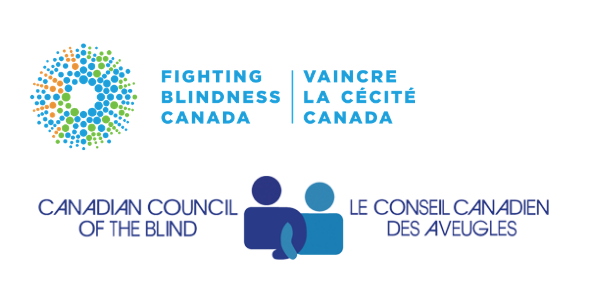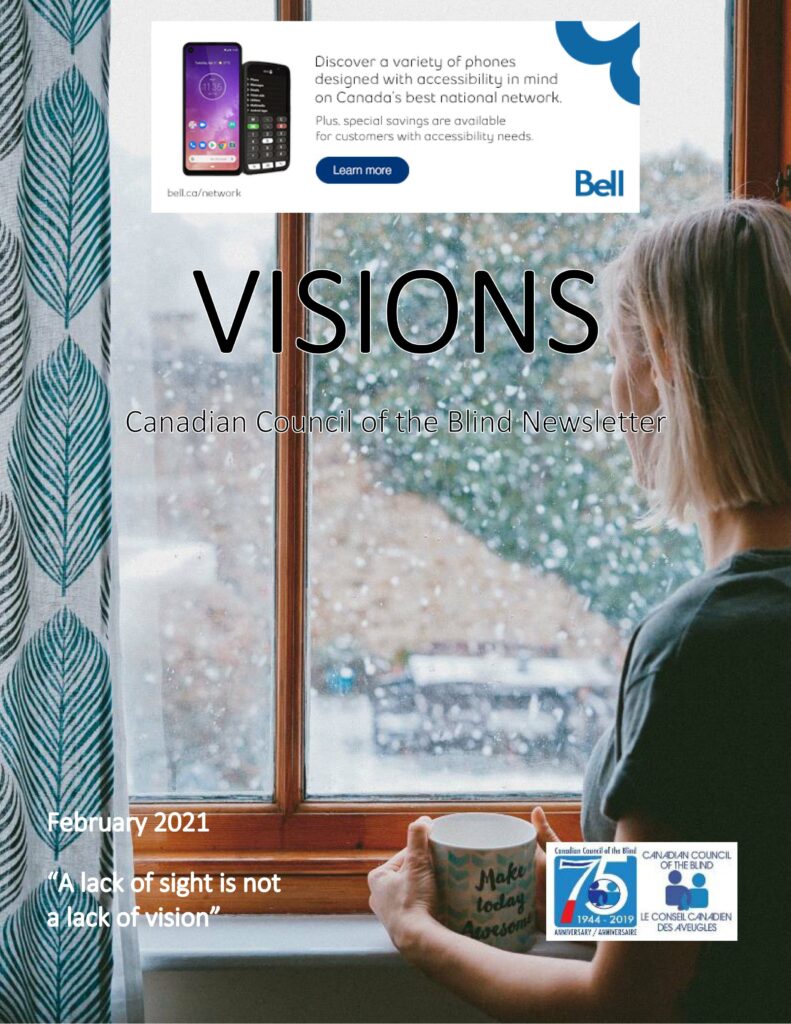The Canadian Council of the Blind, partnering with Fighting Blindness Canada, and key partners, the Canadian Association of Optometrists and the Canadian Ophthalmological Society, commissioned new research, The Cost of Vision loss and Blindness in Canada, from Deloitte Access Economics, to identify Canada’s emerging crisis of preventable blindness.
TORONTO, May 5, 2021 /CNW/ – Released today, a new report reveals the emerging crisis of preventable blindness in Canada, totalling almost $33 billion and impacting all Canadians– including individuals, families and governments.
Living with vision loss negatively impacts an individual’s financial health and often represents a loss of independence affecting their quality of life. As Canada’s population ages, the main drivers of vision loss are more prevalent and will increasingly impact Canada’s health system and economy.
The Cost of Vision Loss in Canada Report (“the Report”) shows 1.2 million Canadians are living with vision loss, with many facing a lack of investment in services and supports that impact them to live life to its fullest potential. This number is expected to grow to 2 million people by 2050, which is concerning given 75 percent of vision loss is either reversible, preventable or treatable if caught early.
The Report revealed the costs that Canadians with vision loss experienced in 2019 as:
- Direct health care costs – $9.5 billion
- Indirect health care & other costs – $6.1 billion
- Cost of well-being – $17.4 billion
“The direct health care costs highlight the need to reduce the progression of eye diseases and vision loss through preventive health measures,” said Keith Gordon, Ph.D., the principal investigator of the Report. “The research demonstrates that the affected individuals and their families primarily bear 65% of the costs of living with vision loss.”
Federal government leadership for families impacted by vision loss is long overdue.
In 2003, the Government of Canada committed to the World Health Organization (WHO) to develop a Vision Health Plan for Canada by 2007. Despite this commitment, there is no vision care plan for Canada.
Beyond the Vision Health Plan, the federal government must also ensure the Canadian health care system and the provinces and territorial governments can meet the growing need for eye care services. There is a need to slow the progression of vision loss and the incidence of eye disease through preventive health.
When governments cover the costs of comprehensive eye examinations, this leads to early detection and diagnosis, with some individuals receiving research-delivered treatments that can stabilize their sight.
Unfortunately, public coverage for comprehensive eye exams differs dependent on where you live in Canada. This lack of public coverage is compounded by limited vision health coverage in workplace benefits programs.
New investments in research, treatments and assistive technologies have made significant contributions to the quality of life of those living with vision loss. Advancements, such as cataract surgery, anti-vascular endothelial growth factor (anti-VEGF) injections and specialized software for the visually impaired, have enabled many individuals with vision loss to enjoy daily activities they had previously found difficult or impossible.
Access and investment into new treatments, programs and technology can stabilize sight helping many Canadians today and in the future.
To learn more about the results of the Report and hear perspectives of this data from optometry, ophthalmology and patient advocates, register for Cost of Vision Loss and Blindness Summit on May 26, 2021.
About the Canadian Council of the Blind
About Fighting Blindness Canada
About the Canadian Association of Optometrists
About Canadian Ophthalmological Society
SOURCE Canadian Council of the Blind










